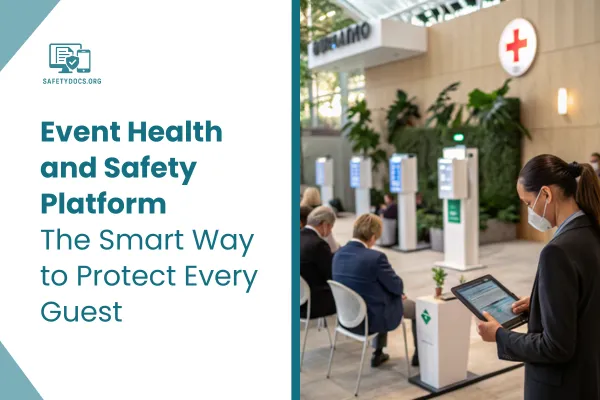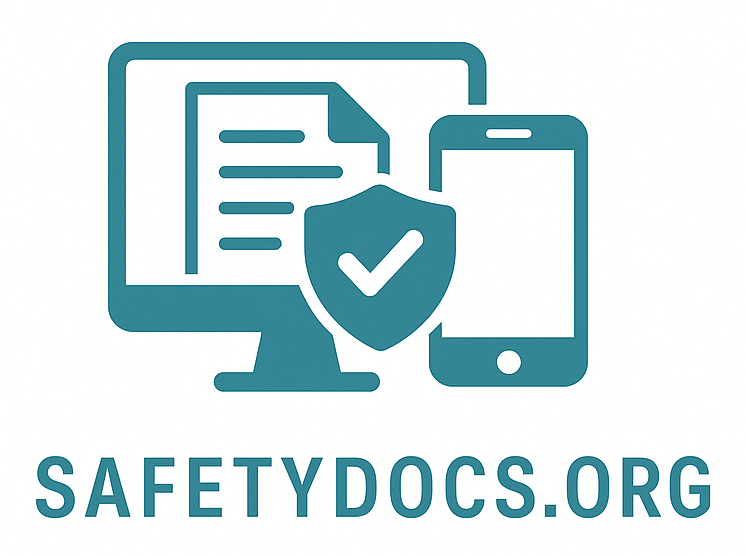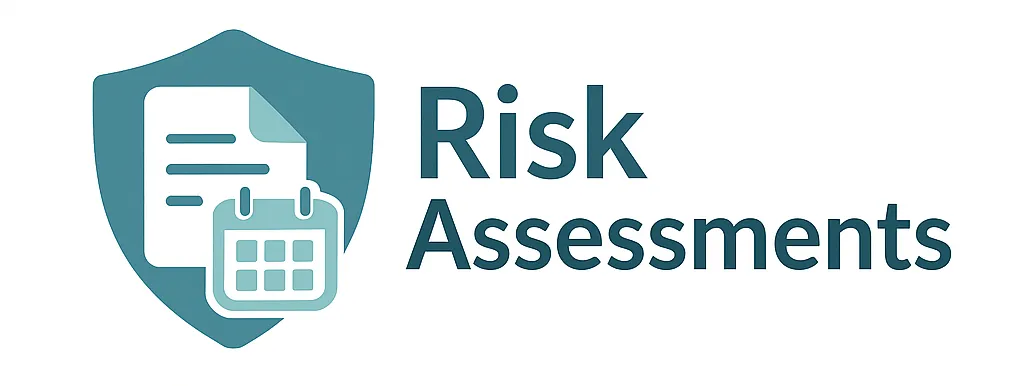
Event Health and Safety Platform Guide
Event Health and Safety Platform: The Smart Way to Protect Every Guest
Planning any event—whether it’s a community fair, music festival, or corporate summit—demands more than creativity and logistics. Health and safety are the backbone of any successful gathering. One overlooked hazard or missed safety protocol can result in serious harm, lawsuits, or a damaged reputation. This is exactly why using an event health and safety platform is now a must—not a luxury.
The Legal Duties Event Organizers Must Fulfill
Every event planner carries a legal responsibility to keep attendees, workers, and third-party vendors safe. Laws like the Health and Safety at Work Act in the UK, OSHA in the US, or WHS regulations in Australia place a clear duty of care on organizers. Failing to follow these regulations doesn’t just put people at risk—it can lead to fines, legal action, or permanent business damage.
An event health and safety platform helps you meet these legal requirements. It allows you to document every safety measure you’ve taken, assign responsibilities, and create a digital trail of compliance. When everything is recorded and easy to access, inspections and audits become far less stressful.
Risk Assessments Made Simpler and Smarter
One of the most crucial steps in event safety planning is the risk assessment. But many organizers still rely on spreadsheets or paper checklists, which are easy to overlook or misplace. That’s where digital platforms excel.
They use structured templates and risk databases to help you quickly spot and assess potential hazards. These include weather threats, stage stability, electrical wiring, trip hazards, or crowd crush points. The platform prompts you to think beyond the obvious and assign each hazard to a responsible person for mitigation.
This method significantly reduces the chances of missing something critical and saves hours of manual work.
Real-Time Communication for Rapid Response
Emergencies don’t wait. A fire, injury, or sudden technical fault can escalate in seconds. Real-time communication tools in an event health and safety platform allow immediate alerts to be sent to everyone involved—from medical teams to crowd control staff.
With push notifications, SMS alerts, or even two-way chat features, the right people can be informed instantly, even if they're across a large venue. This type of coordination ensures swift action and reduces panic among attendees.
Keeping Track of Training and Certifications
Most events involve dozens, if not hundreds, of people from outside companies—security teams, sound engineers, food vendors, and temporary workers. All of them need to be trained for the work they do.
But how can you be sure they are properly certified or inducted before arriving on site?
An event health and safety platform keeps track of all certifications, safety training, and expiry dates. You’ll get alerts when something’s missing or due for renewal. This eliminates the back-and-forth emails and lets you focus on running the event—not chasing paperwork.
Vendor and Contractor Safety Made Easy
Every vendor brings their own equipment, staff, and procedures. Without checks, this can lead to unexpected hazards.
These platforms let you set safety requirements that each contractor must meet—such as liability insurance, signed safety policies, and specific site rules. Uploading documents and tracking completion ensures full accountability.
For instance, if a food truck arrives without a gas inspection certificate, the platform can flag it and restrict access to the event space until resolved. That kind of oversight keeps your event running smoothly and safely.
Incident Reporting That Stands Up in Court
Even with the best planning, incidents happen. What matters is how they are handled.
An event health and safety platform lets staff and attendees report incidents in real time. Whether it's a minor fall or a technical malfunction, reports can include time-stamped photos, videos, and written descriptions. This information can prove essential in future legal disputes and also helps you identify patterns for improvement.
The easier it is to report, the more likely your team is to do it correctly—and quickly.
Mapping the Venue for Safer Movement
Crowd movement is one of the most overlooked but dangerous parts of large-scale events. A blocked exit or overcrowded area can create panic and injury.
Platforms that include digital maps and sensor data allow you to identify pinch points, place barriers strategically, and monitor foot traffic during the event. You can also simulate crowd flow in advance to design safer routes and schedule staggered entry if needed.
Weather and Environmental Risks
Outdoor events always carry environmental risks. From thunderstorms and lightning to dust storms and heatwaves, the weather can flip your plans instantly.
Modern platforms connect to real-time weather feeds and issue automatic warnings if conditions change. You can then inform attendees, adjust schedules, or activate emergency plans without delay. Some platforms also track air quality and noise levels, helping to reduce risks to both guests and staff.
A Smarter Way to Use Your Budget
There’s a myth that safety planning is too expensive for smaller events. In reality, it's the lack of planning that leads to avoidable costs—from legal fees to emergency cancellations.
A centralized platform reduces wasted time, avoids duplicated efforts, and helps you track every safety-related cost. Instead of hiring multiple consultants or producing physical documentation, you can manage everything through one portal. This not only saves money but gives you a clearer view of where to allocate resources.
Features That Matter Most
With so many platforms available, it’s important to choose the right one for your needs. Look for features like:
Mobile access for teams on the move
Compliance tools based on regional laws
Real-time notifications and alert management
Site mapping and geolocation support
Secure document storage and automated backups
You should also consider whether the platform offers customer support, training, and updates. A system is only useful if your team knows how to use it effectively.
Real-World Impact: Results That Speak Volumes
Recent surveys across the event industry have shown measurable improvements from using safety platforms. In one 2023 UK survey, over 65% of planners said they reduced risk assessment time by half. Another report from the U.S. showed that festivals using integrated platforms had 30% fewer safety-related incidents year-over-year.
Event planners have also reported better collaboration across departments, with fewer misunderstandings and faster emergency response times.
A Practical Starting Point
It’s easy to get overwhelmed by new tools. But you don’t have to switch everything at once. Try using the platform for one function—like certification tracking or incident reporting—at your next event.
Once your team is comfortable, you can expand its use. Many platforms even offer onboarding support, so you won’t be left figuring things out alone.
Data Security and Privacy in Safety Platforms
Handling sensitive information—like personal data of staff, medical details, and legal documents—requires strong security measures. A reliable event health and safety platform should have built-in encryption, secure user access controls, and regular backups to protect your data. This helps prevent unauthorized access and keeps your information safe from cyber threats. Knowing your safety data is secure means you can focus on the event without worrying about breaches or data loss.
Customizable Reports for Continuous Improvement
Beyond just managing safety on the day of the event, many platforms provide customizable reporting tools. You can generate detailed reports on incident trends, training compliance, or risk areas specific to your event type. These insights allow organizers to identify recurring issues and improve future planning. Having clear, easy-to-understand reports also makes it simpler to communicate safety performance to stakeholders, sponsors, and regulatory bodies.
FAQs
1. How can I ensure my event meets safety regulations?
Use a centralized system to track safety measures, assign responsibilities, and keep records. This helps you stay organized and compliant with local laws.
2. What are the benefits of digital risk assessments over paper ones?
Digital tools offer structured templates, easy updates, and faster hazard identification, reducing human error and saving time during planning.
3. How does real-time communication improve event safety?
Instant alerts to key personnel enable quick responses to emergencies, minimizing risks and managing situations efficiently.
4. Can a platform help manage certifications for event staff and vendors?
Yes, it tracks training and certification statuses, sends reminders for renewals, and ensures everyone on site is qualified and prepared.
5. What role do reports play in improving future events?
Reports highlight patterns in incidents and compliance, helping organizers make informed decisions to enhance safety in upcoming events.
Conclusion
Choosing an event health and safety platform is a decision that pays off in every possible way. It protects your guests, keeps your staff organized, and helps you meet legal requirements without stress. When you centralize all safety efforts in one system, you create safer, more reliable events that leave a lasting positive impression. Make the smart move now, and give every event the strong foundation it needs to succeed.

